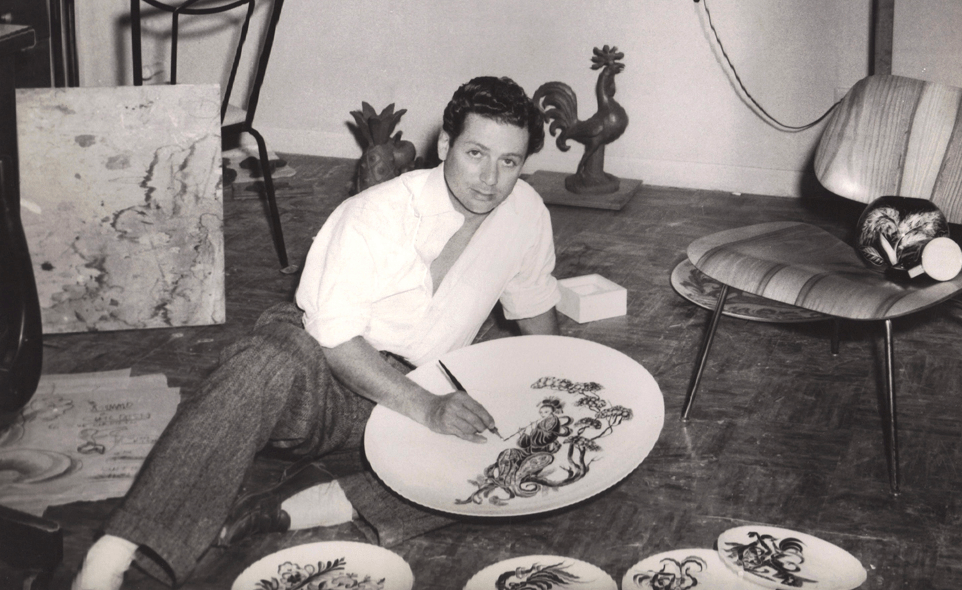Sascha Brastoff with ceramics, 1947. Courtesy of Steve Conti.
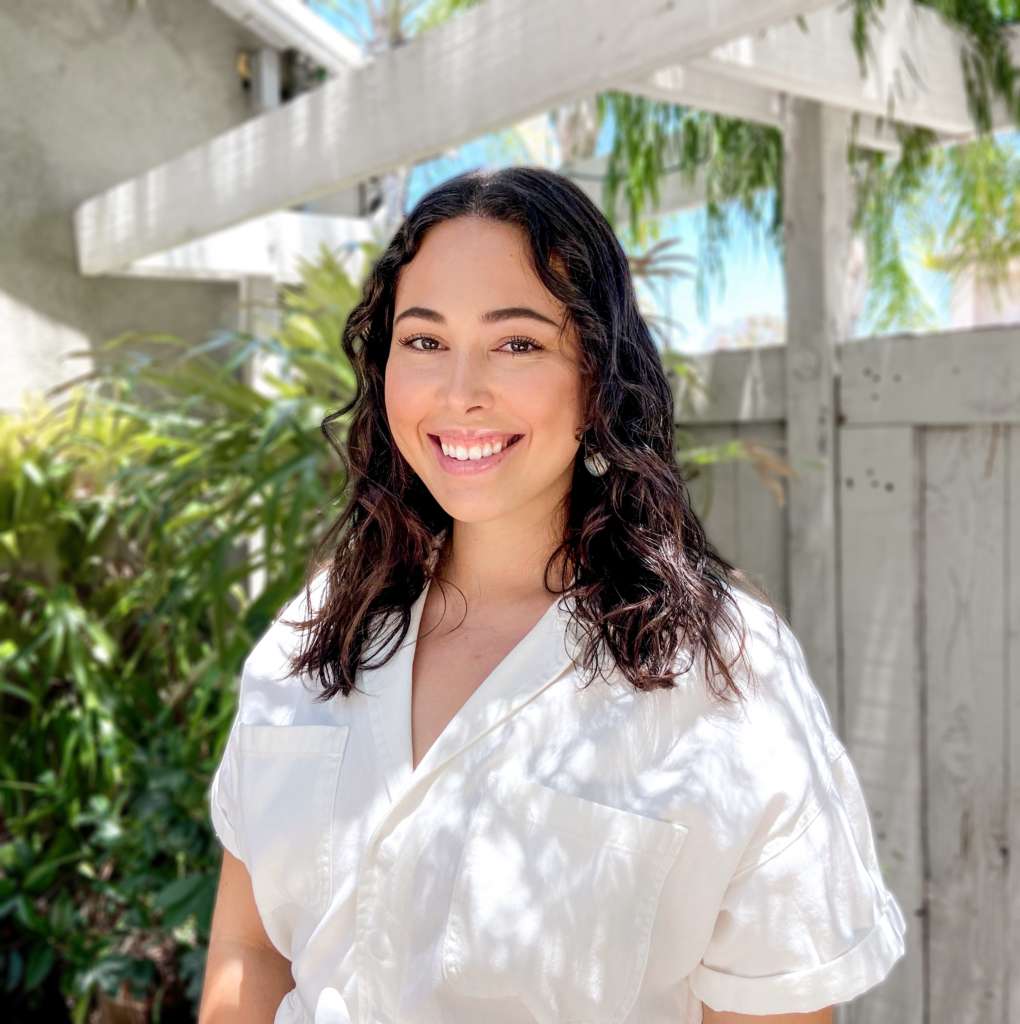
Hi! My name is Alyson, and I’m this year’s Getty Marrow Intern at AMOCA. I recently graduated from Chapman University with a BA in Art History and a minor in Anthropology.
Sascha Brastoff (1917-1993) was a performer, designer, and the founder of a successful production ceramics factory and line that operated in Los Angeles, California, from c.1946 – 1962.
Born Samuel Brostofsky in Cleveland, Ohio in 1917, Sascha Brastoff immersed himself in the arts from a young age. Ballet classes, performing arts school, ceramics, and later jobs such as the window display creator for Macy’s in New York City served as creative outlets for Brastoff. It was not surprising that while serving in the U.S. Air Force during WWII, Brastoff worked as a designer and entertainer, conceiving his famous drag performance identity “GI Carmen Miranda.”
After returning from his service in the Air Force, Brastoff did brief stint for 20th Century Fox Studios as a costume designer, working with stars such as Betty Grabel and yes, Carmen Miranda. Despite his success, he left his contract to focus on his ceramics business. As a child in Cleveland, Brastoff had taken an interest in ceramics at a young age, painting his family’s own dinner plates. In New York City while creating window displays, Brastoff had belonged to a ceramic studio in Greenwich Village called the Clay Club. Forming his own company with the support of his life partner Howard Shoup and the backing of Winthrope B. Rockafeller was a natural decision to make. As the company grew, a massive factory and showroom designed by A. Quincy Jones and Frederick Emmons was built on West Olympic Boulevard in West Los Angeles in 1953. At its height, Brastoff had around 100 ceramicists and decorators working for him.
The productionware lines included dinnerware sets, vases, decorative plates, figurines and more. The wide range of series show Brastoff’s influences: theater and performance, futurism and abstraction, and the stylistic tastes of a midcentury Los Angeles. As I’ve transitioned to interning in AMOCA’s collections department, I have been able to handle several of Brastoff’s vases from his Original Abstract series, which features a horizontal stripe pattern of white, black, and various types of brown, overlaid with a crazing effect.
Lesser known are Brastoff’s more erotic platters, which are extremely difficult to find images of online. The leading biography and catalogue on Brastoff fails to mention them as well, and leaves out Brastoff’s identity as a gay man. Oftentimes Howard Shoup is mentioned in passing as an Air Force friend of Brastoff’s, but rarely as Brastoff’s partner whom he lived with for most of his life. It is interesting how Brastoff’s act as Carmen Miranda was applauded while in the Air Force because it was entertaining, but how his identity is brushed off when it involved other periods in his life, such as his ceramic business. Regardless, Sascha Brastoff was a natural born performer and artist who will be remembered and loved for his influential ceramics created right here in Los Angeles.
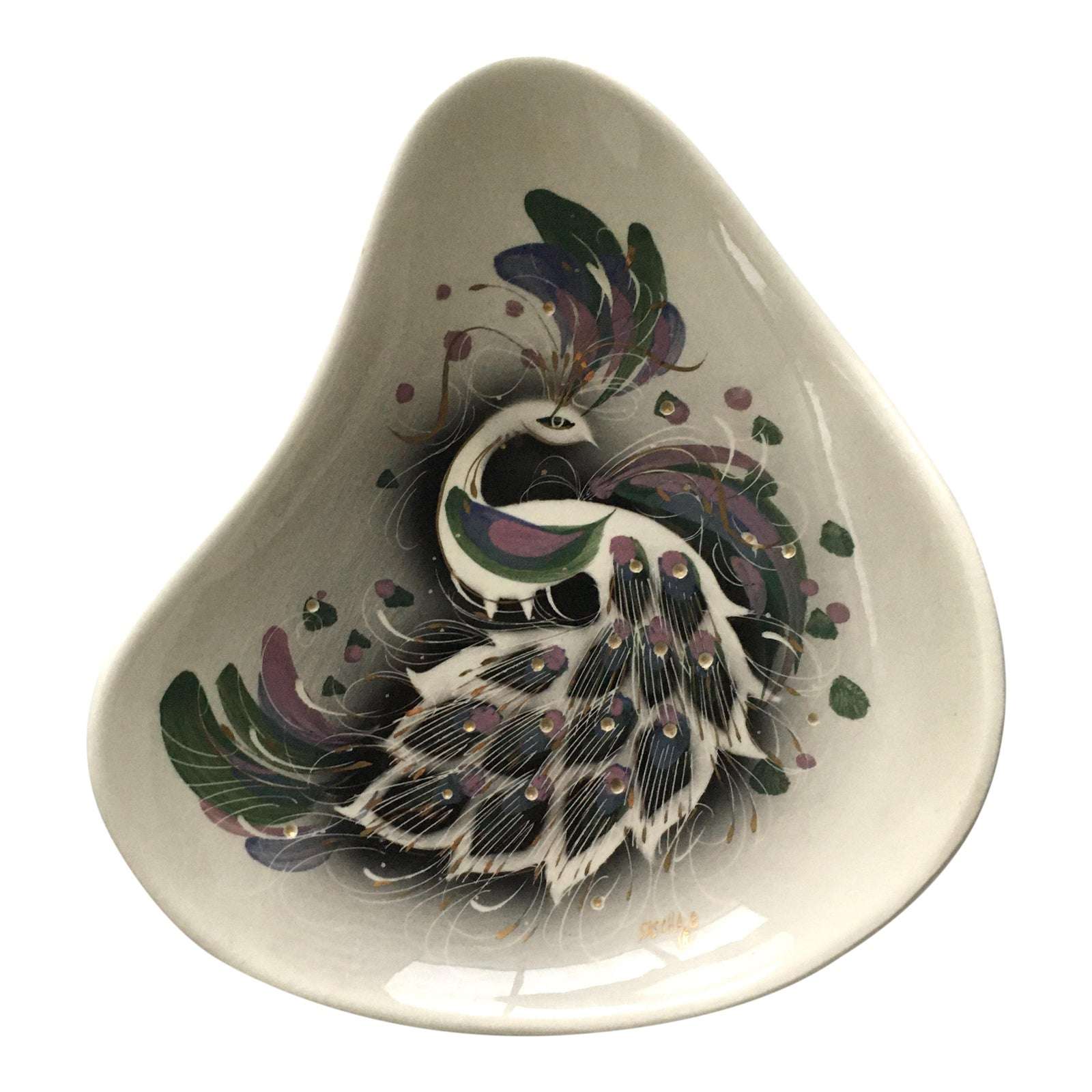
Peacock bowl, glazed ceramic, c. 1950 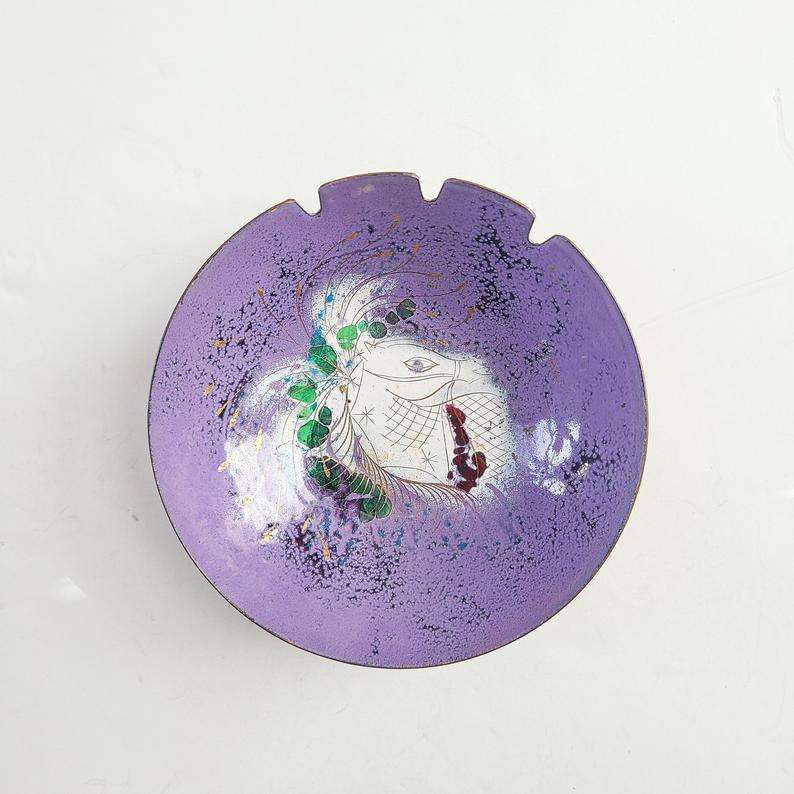
Candy dish, glazed ceramic, c. 1950 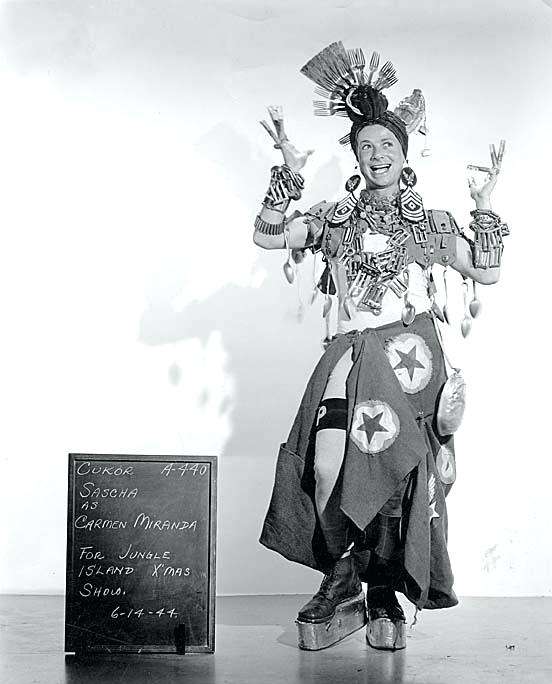
Sascha Brastoff as Carmen Miranda in Winged Victory: Jungle Island Xmas Show, 1944 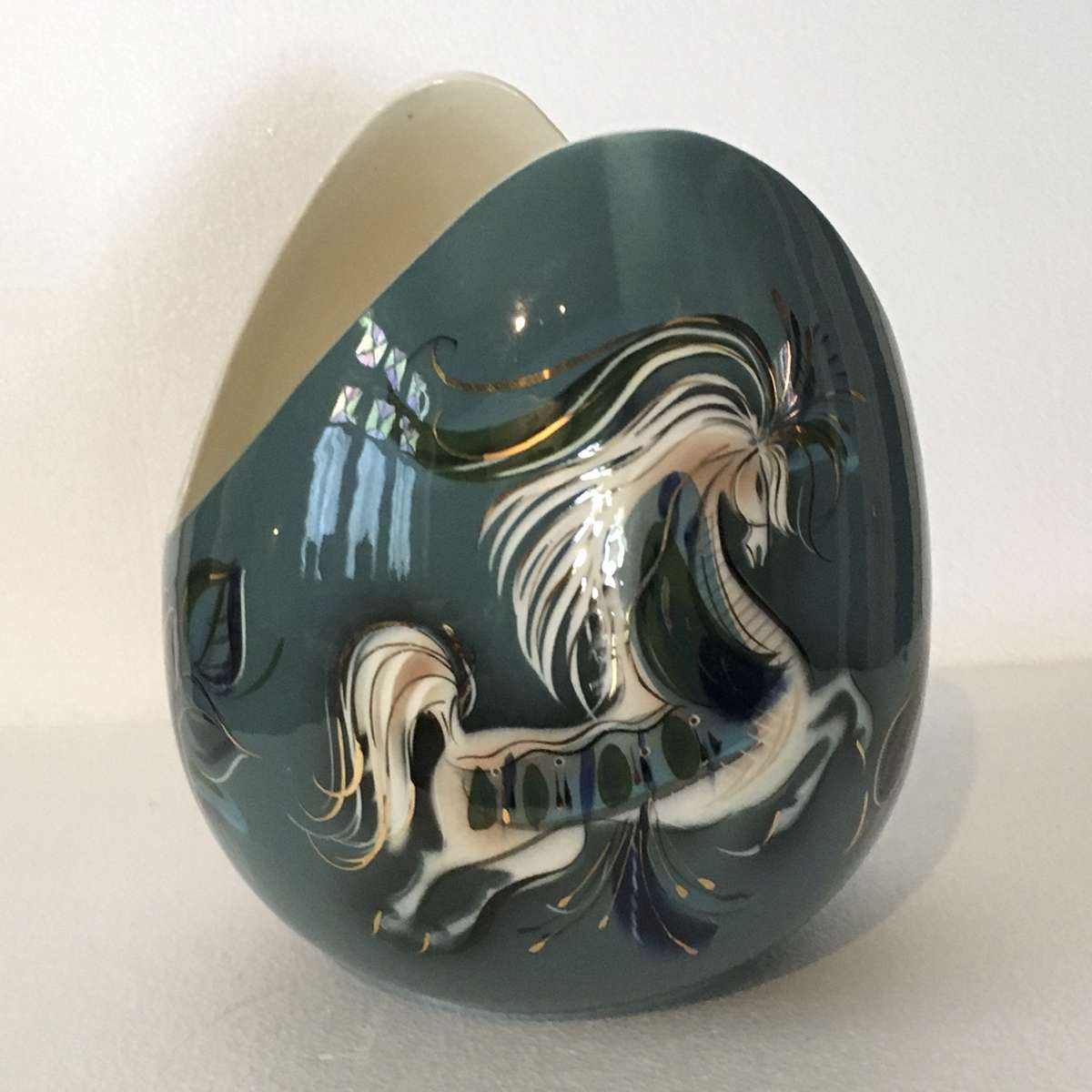
Star Steed Bowl, slip-cast glazed ceramic with luster, 1953-1962 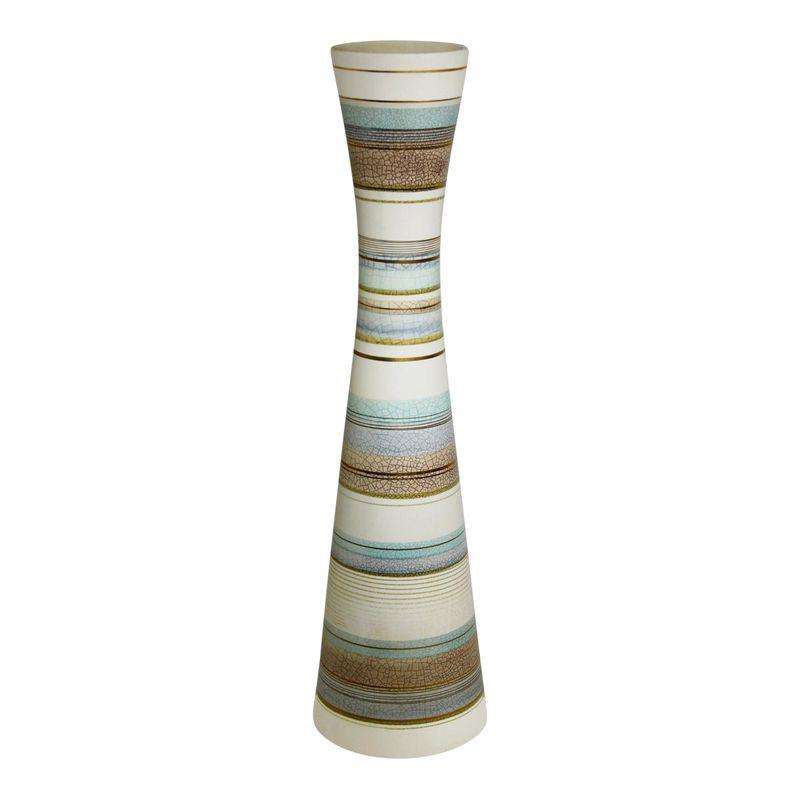
Tall vase, from the Abstract Original series, glazed ceramic, 20” x 5.25” x 5.25”, c.1950 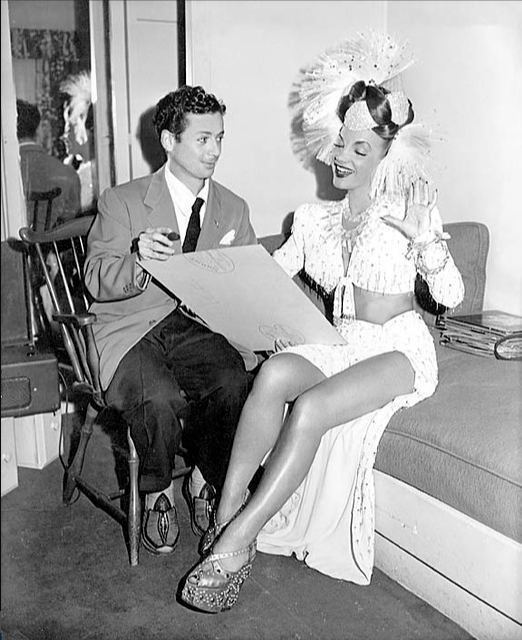
Sascha Brastoff and Carmen Miranda c. 1946 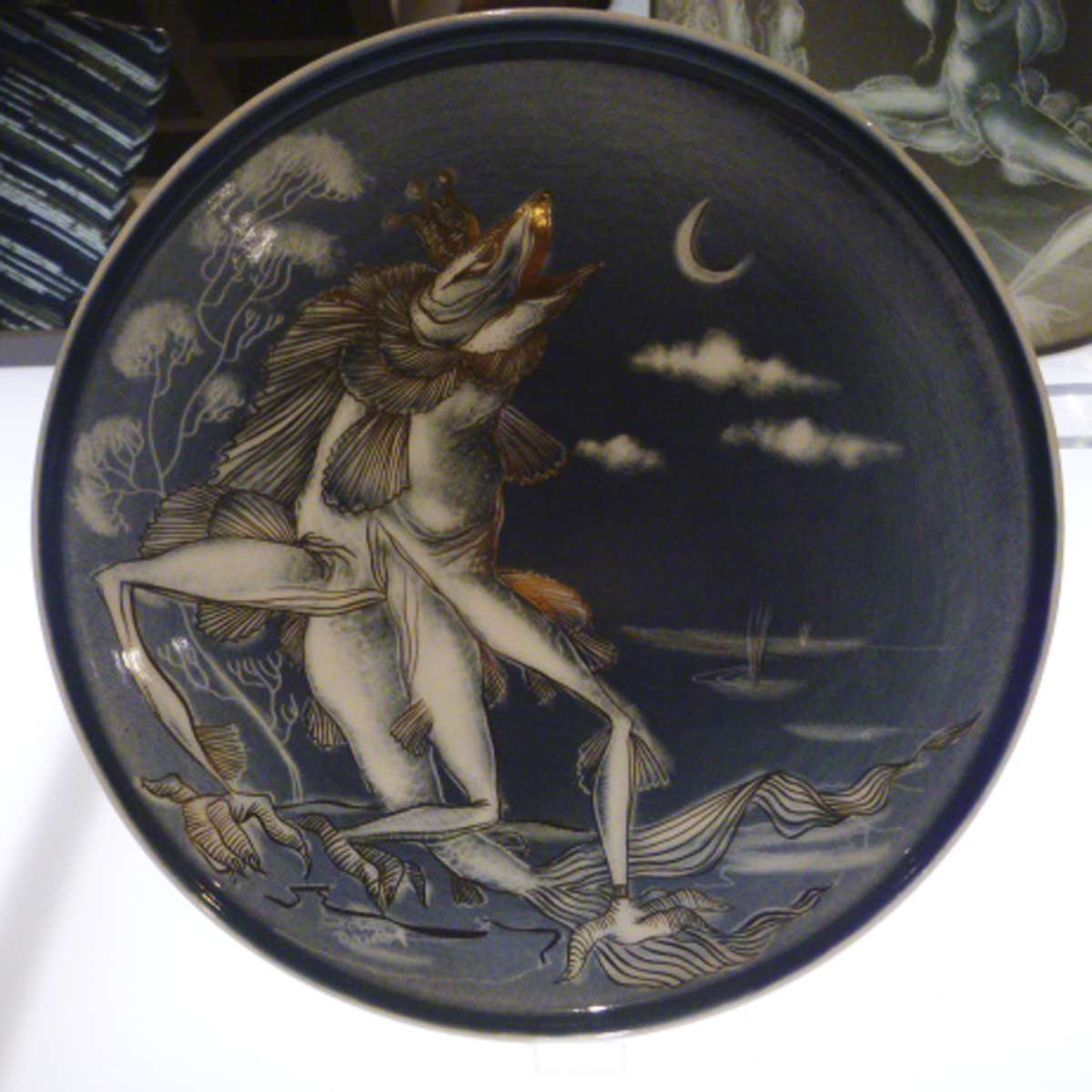
Fish Monster Canape Tray, glazed earthenware, c. 1948.
Alyson Brandes is a graduate of Chapman University and a 2020 Getty Marrow Undergraduate Intern at AMOCA. During her internship, Brandes writes periodically for AMOCA.org, and posts on Instagram and Facebook on Tuesdays. Read her blog posts:
- Asco and the Hierarchies of Art
- Feminizing Brutalism: Ruby Neri and Her Giant Vessels
- The Cinematic Roots of Clay
- The Colorful World of Miss Anna Valdez
- Split Vessels: Jenny Hata Blumenfield
- The Legend of Beatrice Wood
- Nicole Seisler: Rituals, Processes and Documentation
- Ashwini Bhat
- Nancy Selvin: The Abstraction of Art History
- New Acquisitions: Trompe l’Oeil
- Kim Tucker’s “Primal Beings, Ghosts, and Human Dummies”
- Blue Boys and Farmers: Howard Kottler’s Queer Plates
- At the Center of Nicki Green
- The Legacy of Sascha Brastoff
- End of Internship Reflection
